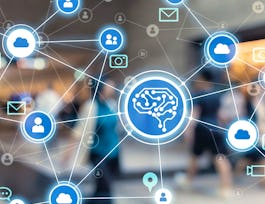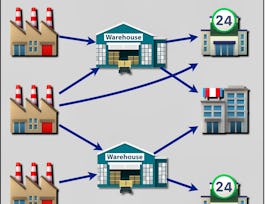Just as teachers help students gain new skills, the same is true of artificial intelligence (AI). Machine learning algorithms can adapt and change, much like the learning process itself. Using the machine teaching paradigm, a subject matter expert (SME) can teach AI to improve and optimize a variety of systems and processes. The result is an autonomous AI system.


Machine Teaching for Autonomous AI
Taught in English
Some content may not be translated
3,754 already enrolled
(39 reviews)
Recommended experience
What you'll learn
You’llbe able to select a use case where autonomous AI can outperform traditional methods—setting the foundation for designing an autonomous AI.
Skills you'll gain
Details to know

Add to your LinkedIn profile
3 quizzes
See how employees at top companies are mastering in-demand skills


Earn a career certificate
Add this credential to your LinkedIn profile, resume, or CV
Share it on social media and in your performance review

There are 4 modules in this course
This module lays the foundation for this course and the entire specialization. You'll learn what makes autonomous AI different from other forms of artificial intelligence. You're invited to take a behind the scenes look at some organizations using autonomous AI and hear from operators and managers about the benefits they're realizing by harnessing autonomous AI. The focus will then transition to you! You'll explore five different mindset profiles that describe different approaches to building AI systems.
What's included
5 videos8 readings
Not all problems are right for an autonomous AI solution. In this module, we explore types of automated systems and their strengths and limitations for various issues. You'll learn how to determine whether a problem needs a solution that goes beyond automated systems and into useful AI.
What's included
9 videos2 readings1 quiz1 peer review
In the last module we looked at "automated" systems (math, menus, and manuals); examining situations where they excel and understanding their limitations. In this module we'll focus on "autonomous" systems such as: machine learning (ML), reinforcement learning (RL), neural networks (NN) and deep reinforcement learning (DRL); assessing both the strengths and weaknesses of each autonomous system. Lastly you'll see how "machine teaching" can tap into the strengths of all the automated and autonomous systems.
What's included
6 videos2 quizzes1 peer review
Wondering what has storytelling has got to do with AI? Good storytelling is a tool of persuasion. Dry facts and data are not as compelling as persuasion arguments. In the real world someone has to fund the development of your autonomous AI design, and you need to tell that person a persuasive story.
What's included
5 videos2 readings1 peer review
Instructor

Offered by
Recommended if you're interested in Machine Learning

University of Washington

Howard University

Coursera Project Network
Why people choose Coursera for their career




Learner reviews
Showing 3 of 39
39 reviews
- 5 stars
90.24%
- 4 stars
2.43%
- 3 stars
4.87%
- 2 stars
0%
- 1 star
2.43%
New to Machine Learning? Start here.

Open new doors with Coursera Plus
Unlimited access to 7,000+ world-class courses, hands-on projects, and job-ready certificate programs - all included in your subscription
Advance your career with an online degree
Earn a degree from world-class universities - 100% online
Join over 3,400 global companies that choose Coursera for Business
Upskill your employees to excel in the digital economy
Frequently asked questions
Access to lectures and assignments depends on your type of enrollment. If you take a course in audit mode, you will be able to see most course materials for free. To access graded assignments and to earn a Certificate, you will need to purchase the Certificate experience, during or after your audit. If you don't see the audit option:
The course may not offer an audit option. You can try a Free Trial instead, or apply for Financial Aid.
The course may offer 'Full Course, No Certificate' instead. This option lets you see all course materials, submit required assessments, and get a final grade. This also means that you will not be able to purchase a Certificate experience.
When you purchase a Certificate you get access to all course materials, including graded assignments. Upon completing the course, your electronic Certificate will be added to your Accomplishments page - from there, you can print your Certificate or add it to your LinkedIn profile. If you only want to read and view the course content, you can audit the course for free.
You will be eligible for a full refund until two weeks after your payment date, or (for courses that have just launched) until two weeks after the first session of the course begins, whichever is later. You cannot receive a refund once you’ve earned a Course Certificate, even if you complete the course within the two-week refund period. See our full refund policy.



